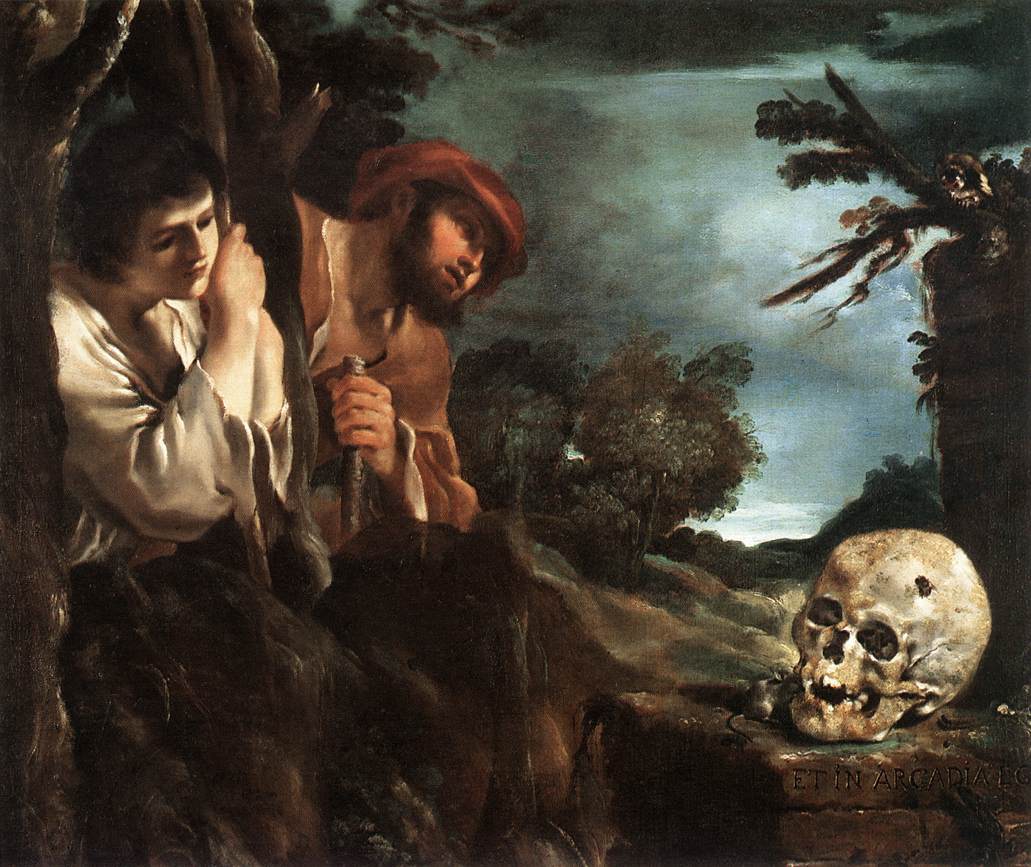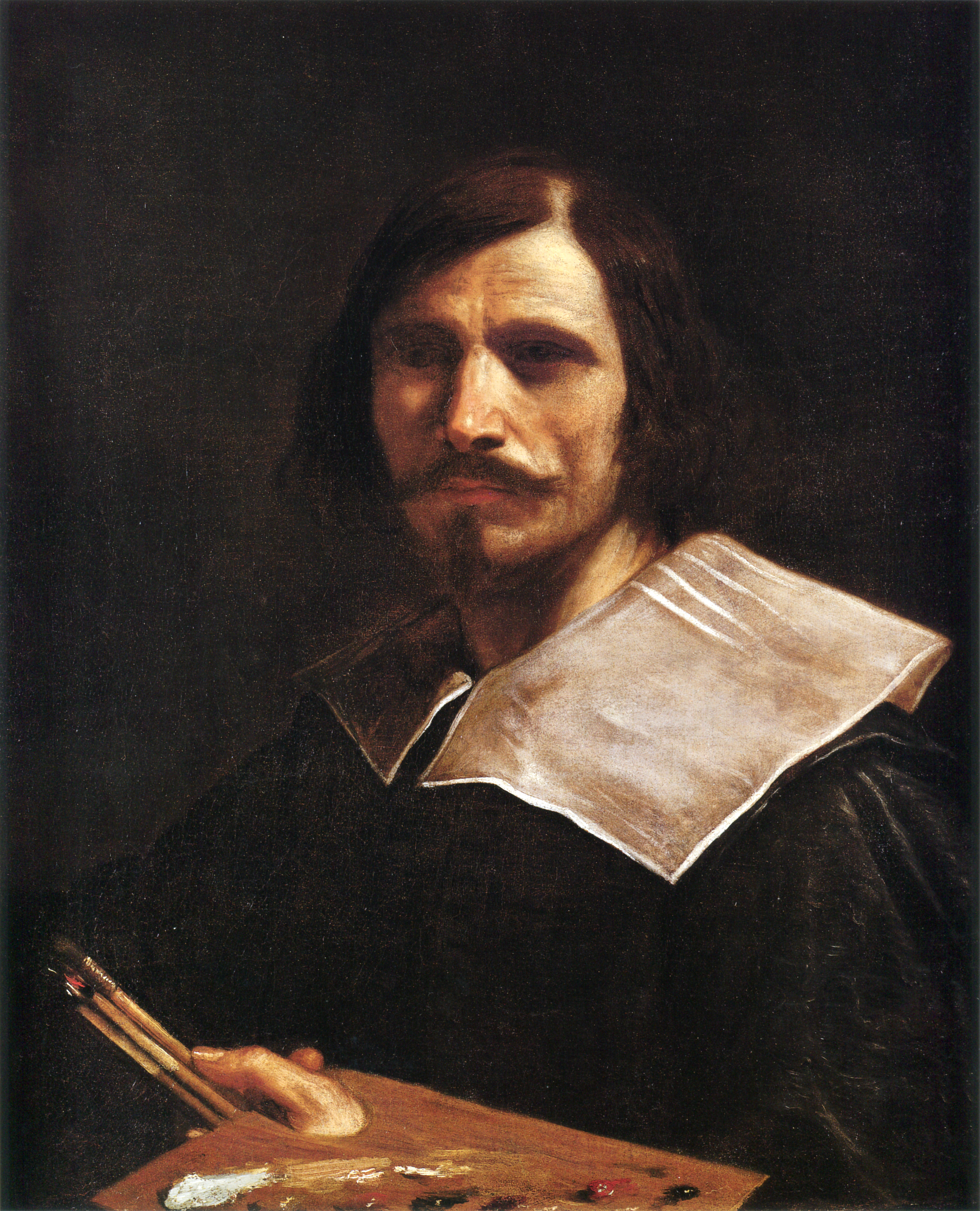The painting shows two young shepherds staring at a skull, with a mouse and a blowfly, placed onto a cippus with the words Et in Arcadia ego ("I too [was] in Arcadia"). The latter is a moral reference to Death. The phrase appears for the first time in art and architecture in this work.
The iconography of the memento mori theme symbolised in art by the skull had been popular in Rome and Venice since the Renaissance. This painting is directly connected to the Apollo and Marsyas that Guercino painted for the Grand Duke of Tuscany in 1618 (Galleria Palatina, Palazzo Pitti, Florence): both pictures include the same group of shepherds. It is assumed that Et in Arcadia Ego could not have existed as an independent composition prior to the Florentine painting, and so must have been executed later.
In this painting, Guercino transforms the rustic onlookers into protagonists in a self-sufficient moralizing theme. An effective exploration of the memento mori is attained by the addition of the skull, with its worm and fly, and the inscription Et in Arcadia ego.
The iconography of the memento mori in a pastoral setting, derived from the Eclogues of Virgil, was well known in Venetian and Roman art from the Renaissance onwards; yet here for the first time it is explicitly explained through the addition of the inscription.


 Guercino
Guercino